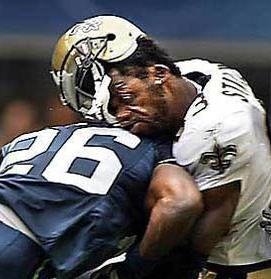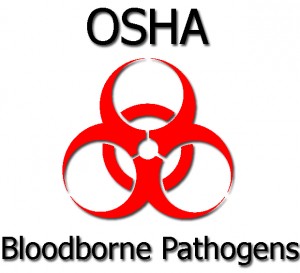 Exposures to blood and other body fluids occur across a wide variety of occupations. Health care workers, emergency response and public safety personnel, and other workers can be exposed to blood through needlestick and other sharps injuries, mucous membrane, and skin exposures. The pathogens of primary concern are the human immunodeficiency virus (HIV), hepatitis B virus (HBV), and hepatitis C virus (HCV). Workers and employers are urged to take advantage of available engineering controls and work practices to prevent exposure to blood and other body fluids.
Exposures to blood and other body fluids occur across a wide variety of occupations. Health care workers, emergency response and public safety personnel, and other workers can be exposed to blood through needlestick and other sharps injuries, mucous membrane, and skin exposures. The pathogens of primary concern are the human immunodeficiency virus (HIV), hepatitis B virus (HBV), and hepatitis C virus (HCV). Workers and employers are urged to take advantage of available engineering controls and work practices to prevent exposure to blood and other body fluids.
Category: Safety
Child Passenger Safety
 Motor vehicle crashes are a leading cause of death for children in the US. Buckling up is the best way to save lives and reduce injuries. Child passenger restraint laws result in more children being buckled up. Only 2 out of every 100 children live in states that require car seat or booster seat use for children age 8 and under. A third of children who died in crashes in 2011 were not buckled up. We—especially parents and caregivers—can do more to protect children on the road. Parents and caregivers can keep children safe by:Knowing how to use car seats, booster seats, and seat belts. Using them on every trip, no matter how short. Setting a good example by always using a seat belt themselves.
Motor vehicle crashes are a leading cause of death for children in the US. Buckling up is the best way to save lives and reduce injuries. Child passenger restraint laws result in more children being buckled up. Only 2 out of every 100 children live in states that require car seat or booster seat use for children age 8 and under. A third of children who died in crashes in 2011 were not buckled up. We—especially parents and caregivers—can do more to protect children on the road. Parents and caregivers can keep children safe by:Knowing how to use car seats, booster seats, and seat belts. Using them on every trip, no matter how short. Setting a good example by always using a seat belt themselves.
Work Related Hearing Loss
 Every year, approximately 30 million people in the United States are occupationally exposed to hazardous noise. Noise-related hearing loss has been listed as one of the most prevalent occupational health concerns in the United States for more than 25 years. Thousands of workers every year suffer from preventable hearing loss due to high workplace noise levels. Since 2004, the Bureau of Labor Statistics has reported that nearly 125,000 workers have suffered significant, permanent hearing loss. In 2009 alone, BLS reported more than 21,000 hearing loss cases.
Every year, approximately 30 million people in the United States are occupationally exposed to hazardous noise. Noise-related hearing loss has been listed as one of the most prevalent occupational health concerns in the United States for more than 25 years. Thousands of workers every year suffer from preventable hearing loss due to high workplace noise levels. Since 2004, the Bureau of Labor Statistics has reported that nearly 125,000 workers have suffered significant, permanent hearing loss. In 2009 alone, BLS reported more than 21,000 hearing loss cases.
Machine Guarding
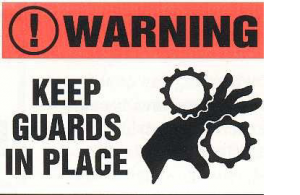 Moving machine parts have the potential to cause severe workplace injuries, such as crushed fingers or hands, amputations, burns, or blindness. Safeguards are essential for protecting workers from these preventable injuries. Any machine part, function, or process that may cause injury must be safeguarded. When the operation of a machine or accidental contact injure the operator or others in the vicinity, the hazards must be eliminated or controlled.
Moving machine parts have the potential to cause severe workplace injuries, such as crushed fingers or hands, amputations, burns, or blindness. Safeguards are essential for protecting workers from these preventable injuries. Any machine part, function, or process that may cause injury must be safeguarded. When the operation of a machine or accidental contact injure the operator or others in the vicinity, the hazards must be eliminated or controlled.
Concussion in Sports
- A concussion is a brain injury and all are serious.
- Most concussions occur without loss of consciousness.
- Recognition and proper response to concussions when they first occur can help prevent further injury or even death.
What is a Concussion?
A concussion is a type of traumatic brain injury, or TBI, caused by a bump, blow, or jolt to the head that can change the way your brain normally works. Concussions can also occur from a blow to the body that causes the head to move rapidly back and forth. Even a “ding,” “getting your bell rung,” or what seems to be mild bump or blow to the head can be serious.
Concussions can occur in any sport or recreation activity. So, all coaches, parents, and athletes need to learn concussion signs and symptoms and what to do if a concussion occurs.
via CDC – Sports – Concussion – Traumatic Brain Injury – Injury Center.
Keep Employees Safe with an Effective Safety and Health Management System
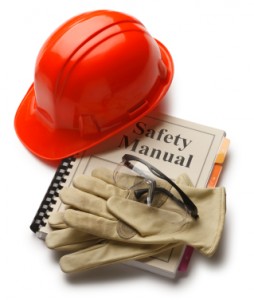 There are five major elements of an effective SHMS:
There are five major elements of an effective SHMS:
a) Management Commitment and Planning – Top management must provide visible ongoing commitment and leadership for implementing the SHMS covering all workers, including contract workers.
b) Employee Involvement – The best SHMSs involve employees at every level of the organization. Employees are often those closest to the hazard and have first-hand knowledge of workplace hazards.
c) Worksite Analysis – Worksite Analysis is a comprehensive evaluation of the hazards and potential hazards in your workplace.
d) Hazard Prevention and Control – Effective management actively establishes procedures for timely identification, correction, and control of hazards. Once hazards and potential hazards are recognized, a hazard prevention and control program can be designed.
e) Safety and Health Training – Training is the means to help assure employees and management understand safety and health hazards in the workplace and know how to protect themselves and others from the hazards while doing their job.
Prevent Snow Shoveling Injuries
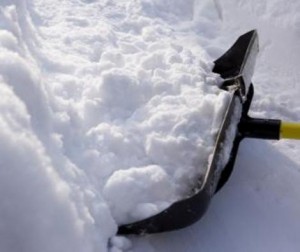 Snow removal is more than just another necessary household chore. All that bending and heavy lifting can put you at serious risk for injury. Snow removal can be especially dangerous if you do not exercise regularly.
Snow removal is more than just another necessary household chore. All that bending and heavy lifting can put you at serious risk for injury. Snow removal can be especially dangerous if you do not exercise regularly.
According to the 2009 US Consumer Product Safety Commission:
- Approximately 16,500 people were treated in hospital emergency rooms for injuries that happened while shoveling or removing ice and snow manually
- The most common injuries associated with snow removal include sprains and strains, particularly in the back and shoulders, as well as lacerations and finger amputations.
General Tips for Safe Snow Clearing
- Check with your doctor. Because this activity places high stress on the heart, you should always speak with your doctor before shoveling or snow blowing. If you have a medical condition or do not exercise regularly, consider hiring someone to remove the snow.
- Dress appropriately. Light, layered, water-repellent clothing provides both ventilation and insulation. It is also important to wear the appropriate head coverings, as well as mittens or gloves and thick, warm socks. Avoid falls by wearing shoes or boots that have slip-resistant soles.
- Start early. Try to clear snow early and often. Begin shoveling/snowblowing when a light covering of snow is on the ground to avoid dealing with packed, heavy snow.
- Clear vision. Be sure you can see what you are shoveling/snowblowing. Do not let a hat or scarf block your vision. Watch for ice patches and uneven surfaces.
Tips for Snow Shoveling
- Warm-up your muscles. Shoveling can be a vigorous activity. Before you begin this physical workout, warm-up your muscles for 10 minutes with light exercise.
- Pace yourself. Snow shoveling and snow blowing are aerobic activities. Take frequent breaks and prevent dehydration by drinking plenty of fluids. If you experience chest pain, shortness of breath, or other signs of a heart attack, stop the activity and seek emergency care.
- Proper equipment. Use a shovel that is comfortable for your height and strength. Do not use a shovel that is too heavy or too long for you. Space your hands on the tool grip to increase your leverage.
- Proper lifting. Try to push the snow instead of lifting it. If you must lift, do it properly. Squat with your legs apart, knees bent, and back straight. Lift with your legs. Do not bend at the waist. Scoop small amounts of snow into the shovel and walk to where you want to dump it. Holding a shovelful of snow with your arms outstretched puts too much weight on your spine. Never remove deep snow all at once. Do it in pieces.
- Safe technique. Do not throw the snow over your shoulder or to the side. This requires a twisting motion that stresses your back.
via Prevent Snow Shoveling and Snowblowing Injuries -OrthoInfo – AAOS.
Prevent Fires from Alternative Heat
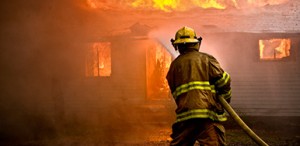 More than 3,400 Americans die each year in fires and approximately 17,500 are injured. An overwhelming number of fires occur in the home. Many are started by alternative heaters. Here are a few tips to keep you and your family safe.
More than 3,400 Americans die each year in fires and approximately 17,500 are injured. An overwhelming number of fires occur in the home. Many are started by alternative heaters. Here are a few tips to keep you and your family safe.
- Portable heaters need their space. Keep anything combustible at least three feet away.
- Keep fire in the fireplace. Use fire screens and have your chimney cleaned annually. The creosote buildup can ignite a chimney fire that could easily spread.
- Kerosene heaters should be used only where approved by authorities. Never use gasoline or camp-stove fuel. Refuel outside and only after the heater has cooled.
OSHA Top 10 Most Cited Standards
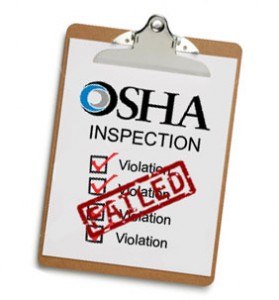 The following is a list of the top 10 most frequently cited standards* following inspections of worksites by federal OSHA. OSHA publishes this list to alert employers about these commonly cited standards so they can take steps to find and fix recognized hazards addressed in these and other standards before OSHA shows up. Far too many preventable injuries and illnesses occur in the workplace.
The following is a list of the top 10 most frequently cited standards* following inspections of worksites by federal OSHA. OSHA publishes this list to alert employers about these commonly cited standards so they can take steps to find and fix recognized hazards addressed in these and other standards before OSHA shows up. Far too many preventable injuries and illnesses occur in the workplace.
- 1926.501 – Fall Protection
- 1910.1200 – Hazard Communication
- 1926.451 – Scaffolding
- 1910.134 – Respiratory Protection
- 1910.305 – Electrical, Wiring Methods
- 1910.178 – Powered Industrial Trucks
- 1926.1053 – Ladders
- 1910.147 – Lockout/Tagout
- 1910.303 – Electrical, General Requirements
- 1910.212 – Machine Guarding
via Top Ten Standards.
Calculating Wind Chill Dangers
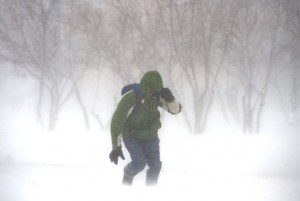 The NWS Windchill Temperature (WCT) index uses advances in science, technology, and computer modeling to provide an accurate, understandable, and useful formula for calculating the dangers from winter winds and freezing temperatures. The index:
The NWS Windchill Temperature (WCT) index uses advances in science, technology, and computer modeling to provide an accurate, understandable, and useful formula for calculating the dangers from winter winds and freezing temperatures. The index:
- Calculates wind speed at an average height of five feet, typical height of an adult human face, based on readings from the national standard height of 33 feet, typical height of an anemometer
- Is based on a human face model
- Incorporates heat transfer theory, heat loss from the body to its surroundings, during cold and breezy/windy days
- Lowers the calm wind threshold to 3 mph
- Uses a consistent standard for skin tissue resistance
- Assumes no impact from the sun (i.e., clear night sky).
via NWS Wind Chill Index.

